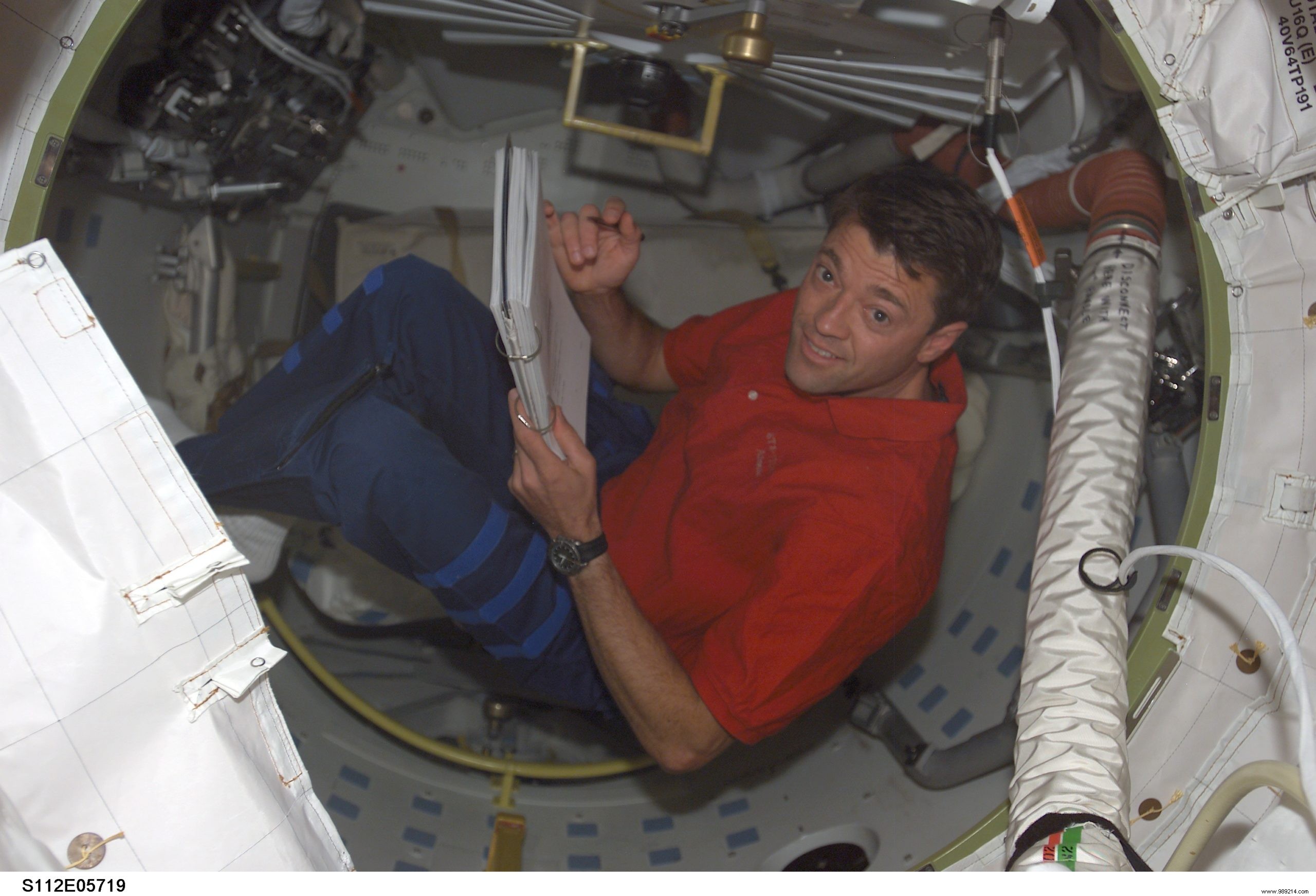Like many people on Earth, astronauts aboard the ISS have regular work schedules, with time off and days off to relax. loosen. Although it may seem normal to us, this consideration for the mental health of astronauts has not always been taken into account.
In the 1960s, American astronauts experienced the Mercury, Gemini, and Apollo missions that sometimes required several people to be confined to small, cramped spacecraft for several days. At the time, every minute spent in space was invaluable and the "happiness" of astronauts was not necessarily a factor.
Then, in the 1970s , NASA began considering extended missions aboard a fully functional space station, named Skylab. From then on, "little extras" that could improve the quality of life of astronauts were thought out and developed.
Built from the empty shell of a Saturn V rocket, Skylab offered crew quarters, a galley, and even a race track. At the time, NASA even went so far as to call on interior designer Raymond Loewy, famous among other things for his design of the Coca-Cola bottle.
Still, new designs aren't everything. If during the second mission (Skylab 3, in July 1973), the astronauts were able to carry out their work without problems during their two months on board the station, the following mission (Skylab 4, in November 1973) did not did not go as smoothly.
Aboard, astronauts Gerald Carr, Ed Gibson and Bill Pogue had a busy list of tasks to complete each day, but little free time to rest. As a result, they "did the job “, but soon became frustrated. Very quickly, the crew therefore expressed their concerns to NASA. And the agency not only heard them, but also listened.
Aboard the Skylab station, schedules were then restructured to include more free time , especially before and after sleep. And that changed everything. "You could see the difference “, says spaceflight historian David Hitt. "They were so much more productive in the second half of the mission “.
Skylab's experience naturally shaped the new way of living aboard the International Space Station (ISS). On board, the astronauts no longer work 24 hours a day, 7 days a week, but from nine to five hours from Monday to Friday . Evenings and weekends are reserved for rest.
Well, not quite. In reality, the crew devotes three to four hours of their Saturday to cleaning their environment from top to bottom to prevent the proliferation of fungi, molds and other bacteria. The rest of the weekend, on the other hand, is well and truly reserved for free time.

How astronauts spend their free time depends on each individual. Some let themselves be carried by the lack of gravity to the observation cupola of the ISS from where they can appreciate the beauty of our planet. “Taking pictures [of Earth] is an area of relaxation that is often mentioned “, underlines Gloria Leon, professor emeritus of psychology at the University of Minnesota.
Others take musical instruments with them. In 2001, astronaut Carl Walz serenaded his friends on the station with his keyboard. Later, in 2013, Canadian astronaut Chris Hadfield wowed us with his guitar when he covered David Bowie's "Space Oddity". Our Frenchman Thomas Pesquet took his saxophone on his first mission in 2017.
Just like us, astronauts can also watch movies, shows or listen to podcasts. Others, like Douglas Wheelock during his mission in 2010, do not hesitate to keep a journal. “I really started to find comfort in writing down my thoughts “, he explains. “I ended up writing some poetry “.
Finally, astronauts can also make phone calls or connect to the Internet. Most of them have very active Twitter accounts. This high level of communication allows them to feel anchored with the Earth and allows us, on the surface, to be able to fly with them.